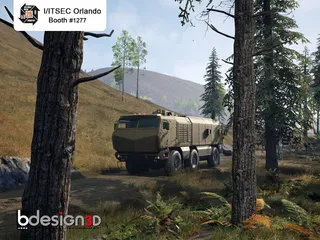Sounding the Alarm Part 2: Training to Defeat the Lithium Battery Fire Threat
Contact Our Team
For more information about how Halldale can add value to your marketing and promotional campaigns or to discuss event exhibitor and sponsorship opportunities, contact our team to find out more
The Americas -
holly.foster@halldale.com
Rest of World -
jeremy@halldale.com
.JPG/r%5Bwidth%5D=320/9d88a080-4581-11f0-af24-714abd46b0c5-CAT%20Kauchak%20%232%20Lithium%20Battery%20airBaltic%20BO%20demos_25%20(1).webp)
This is the second of a two-part series on the risks to safe air travel which can be posed by lithium batteries, with the initial article posted to CAT this 9 June.
In this companion article we’ll take a more in-depth look at the training strategies being developed and used across the civil aviation enterprise – at two representative airlines and a simulation and training industry company.
And there are significant results to report. The two airlines noted their expansion of training to defeat this safety hazard and an S&T supplier is bolstering its offerings to better support end-users at airlines and other organizations.
Two Airline are All-In to Train to the Threat
Avelo Airlines (Avelo) and airBaltic are two airlines that have heard and responded to the call to strengthen their training and safety programs to defeat the onboard lithium battery fire threat.
Michael Quiello, Avelo Head of Safety & Security, Avelo Airlines, initially told CAT his airline views this focus as an “all-hands” effort, with inflight crewmembers (flight attendants), flight deck crewmembers (pilots) and airport operations personnel (above- and below the wing) all trained in recognizing lithium-ion battery events and responding to them both quickly and effectively. The executive added, “All baggage equipped with a lithium-ion battery (other than lithium button cells) must be removed from the baggage and the lithium battery must be carried in the cabin; or the baggage itself must be carried in the cabin – where if there was an event, it is accessible and can be managed.” Quiello also commented on the breadth of training on the topic, with Avelo highlighting lithium-ion battery events in training, and speaking to industry events on its weekly “One Crew” (“all company”) call. “We also highlight it in our monthly Safety Newsletters.”
In a nod to staying current with, and even ahead of, regulatory rules on the safety threat, the executive noted US-based Avelo “voluntarily equipped, above all regulatory requirements, all our aircraft with two Cell Block LIBIKs (Lithium-Ion Battery Incident Kit), one larger one in the cabin and one in the flight deck. LIBIK can extinguish a lithium-ion battery fire in seconds and contain smoke and fumes.”
This 29 May, the airBaltic Corporate Communications Unit told the author their Latvian-based airline has also taken a proactive approach in addressing the increasing threat of lithium battery fires on board aircraft.
It is noteable that this carrier’s story to counter this safety threat began in 2017, when it researched specialized equipment designed to effectively combat lithium battery fires in flight.
“After evaluating several available solutions, we selected the X-Bag from SACS Boysen Aerospace Group as the most suitable option.” In May 2018, the first group of airBaltic instructors traveled to Amsterdam, Netherlands to undergo dedicated training on the use of the X-Bag. “Prior to introducing the equipment across our fleet, all cabin crew received differences training to ensure proper handling of the new device. Simultaneously, a tailored PED [personal electronic device] Fire Drill was developed, formally approved, and integrated into our operations manual,” according to the media team.
Since the deployment of the X-Bag – referred to within airBaltic as the PED Fire Kit – all newly recruited cabin crew members undergo both theoretical and hands-on training in its use. The team continued, “The PED Fire Drill is also embedded into our Recurrent Training Program,
featuring a custom-designed iPad replica that produces smoke and spark effects, enhancing the realism and effectiveness of the training.”
Additionally, each year during airBaltic’s joint flight crew and cabin crew training sessions, the airline conducts a full mock-up scenario to refresh and reinforce the practical application of the PED Fire Drill.
S&T Industry Insight
The author also continued his discussion with Robin Pijnaker, Managing Director of Flame Aviation (Flame), carrying over from this April’s WATS 2025. During the Orlando summit the two individuals chatted about a wide range of training and safety topics, including lithium
battery fires.
The industry expert noted during our reengagement that one of the key concerns expressed by prospective customers is the lack of adequate and realistic training tools for lithium-ion battery fire scenarios onboard aircraft. “These types of fires behave very differently from, for example, electrical or galley fires and must be addressed using different procedures. Airlines without access to next-generation fire trainers often resort to training just one generic scenario — typically a simulated fire in a car park next to the training center,” he pointed out and further reflected on his observations from his global business travel. “Unfortunately, this approach teaches little beyond how to discharge a fire extinguisher, which in many cases is not even the type used on board the aircraft.”
And while airlines are aware of the imperative to train to meet the onboard lithium fire challenge, he said he air carriers increasingly realize that there is no “one-size-fits-all” procedure when it comes to onboard fires. “The nature of the fire — especially its root cause — determines the appropriate response. This makes it essential to train cabin crew for a variety of realistic inflight scenarios, including lithium battery fires, in order to ensure that they can act quickly, effectively, and with confidence.”
Pijnaker emphasized Flame Aviation’s business model includes listening closely to airlines with real-life experience handling lithium-ion battery fires onboard and have translated their input into practical training capabilities. In collaboration with these operators, Flame has developed a variety of training scenarios involving PEDs such as laptops, tablets and smartphones. The MD explained, “These devices can be positioned in realistic locations throughout the cabin — for example on a tray table, inside an overhead bin, or on a passenger seat.” To add more fidelity to the S&T company’s portfolio, Flame’s next-generation fire trainers allow instructors to build highly realistic, progressive scenarios. “A typical lithium battery fire simulation may begin with the distinct smell of a smoldering PED, followed by visible smoke and then open flames. Crew members are trained to respond to each phase of the event using the correct procedures. The training can also include the appropriate follow-up actions — such as placing the device in a containment bag and securing it in a safe location like a lavatory — ensuring that crew members are fully prepared for the complete incident timeline.”
On Netherlands-based Flame Aviation’s business horizon, the company is actively investing in the continuous enhancement of its fire training systems, with a strong focus on lithium-ion battery fire scenarios — one of the most critical emerging risks in aviation today.
The MD concluded, “We are currently expanding our baseline systems with new features that allow for:
1. Custom-built lithium battery fire scenarios that simulate PEDs in different cabin locations (e.g., under seats, in seat pockets, overhead bins);
2. Progressive incident escalation, starting with heat or smell cues, followed by smoke and fire — to help crew identify and respond to evolving situations;
3. Instructor-controlled variability, allowing trainers to tailor scenarios in real time to test decision-making under pressure; and
4. Integration of real-world safety equipment, including containment bags, smoke hoods and gloves, enabling full procedure training from detection to safe stowage.”
On CAT’s Watchlist
The threat of lithium battery fires continues to increase on civil aviation aircraft. CAT will continue to observe and comment on developments to deter and defeat this safety hazard through changes to training strategies and new regulatory rules and other developments.


